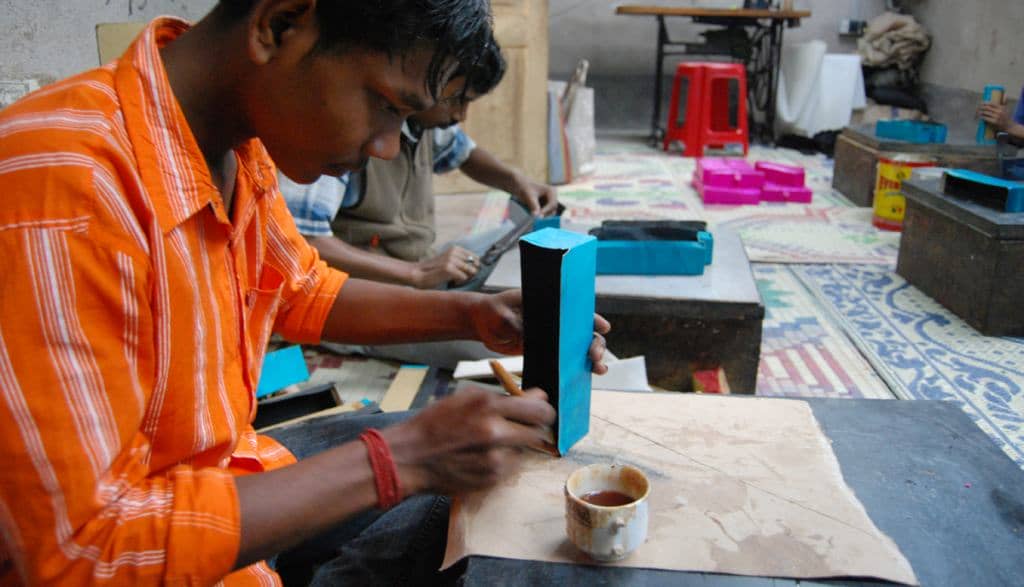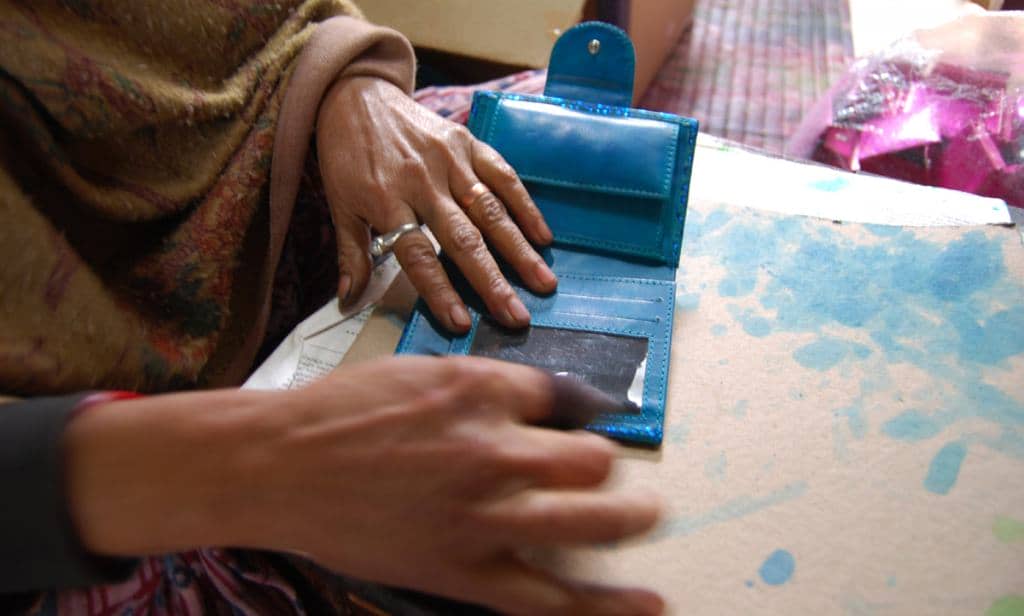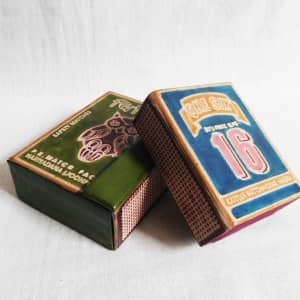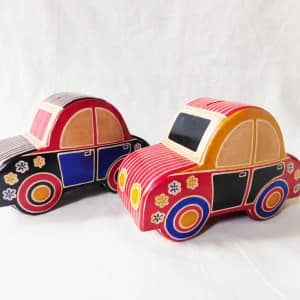Embossed Goatskin Leatherwork
Shanti Handicrafts is a small leather unit situated in rural Bengal, at Habra near the India-Bangladesh Border. They specialize in ‘Shantiniketan’ style hand-embossed leather products.
Embossed leatherwork on goatskin has been a specialty of West Bengal since 1940s. It is said that it was Rabindranath Tagore’s daughter-in-law who brought this legendary art of embossing to Bengal from Java. It was in the 1980’s, Sasha revived this craft unique to Shantiniketan and helped disseminate the skill to other parts of Bengal. Their products include different varieties of bags, purses, frames and boxes. The designs reiterate the fact that traditional concepts can be molded to satisfy modern functional requirements.

An Entrepreneurial Success in Rural West Bengal
This enterprise is a living example of Sasha’s efforts to build entrepreneurship among rural youth. Shanti Handicrafts started over a decade back with a few local artisans led by a young artisan-entrepreneur, Dilip Das. He is a master craftsman, with a formal exposure to leather embossing. Sasha provided initial inputs and order support which enabled the small group to gradually start growing. Sasha has provided sustained inputs to design & product development, technical and skill up-gradation, quality control and, most importantly, vigorous promotion & marketing drive. This has expanded the scope of ‘Shantiniketan’ style hand-embossed leather products and created greater employment opportunities for the craftspeople.
In spite of the good work, the unit suffered from a period of low productivity and slow growth which affected its margins and cash flow. It was then that Sasha-EDF with support from one of its Fair Trade partners undertook a systematic and integrated project at Shanti Handicrafts. The project intervened in several areas of operations & systems, design & development, modernization & skill up-gradation. Sasha-EDF offered a range of services to the group from infrastructure support, improvement in planning, processing, coloring, stitching and simultaneous skill development. Sasha introduced new design concepts, contemporary color schemes and a fresh look to the existing product range. Sasha has promoted these products in the international marketplace and facilitated direct contact with foreign buyers through systematic feedback mechanisms.

Economic Stability for Artisans
In the last 5 years, Shanti Handicrafts’ turnover has increased significantly and the number of artisans grown to more than 25. Today they are a thriving enterprise with a regular income for its artisans in the community. The unit is development-minded, quality conscious, environmentally responsible and socially proactive. They have always lived up to the demands of international business and have done well in the domestic market as well.



